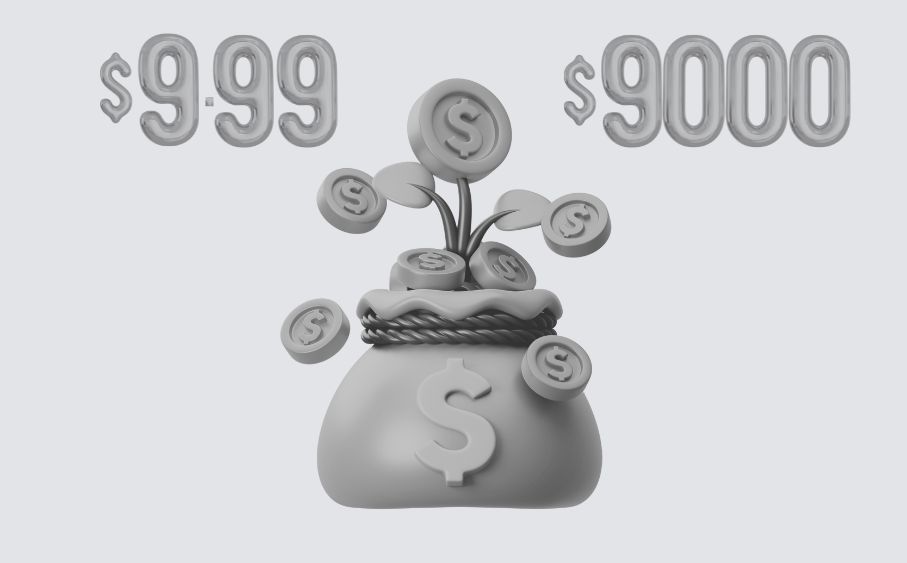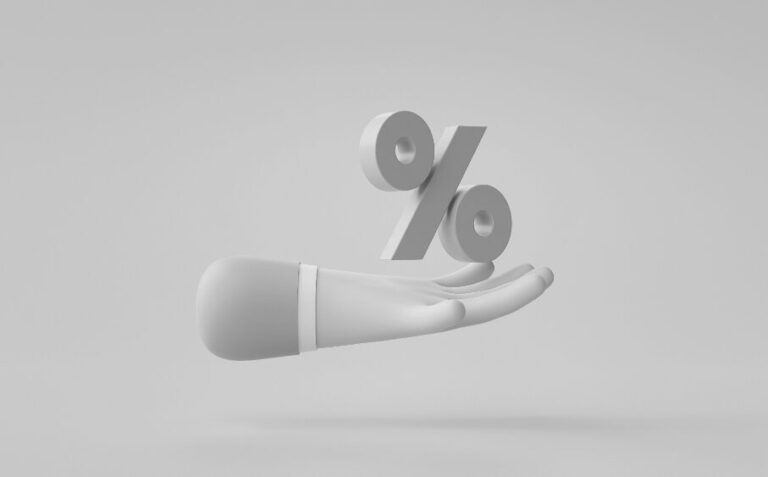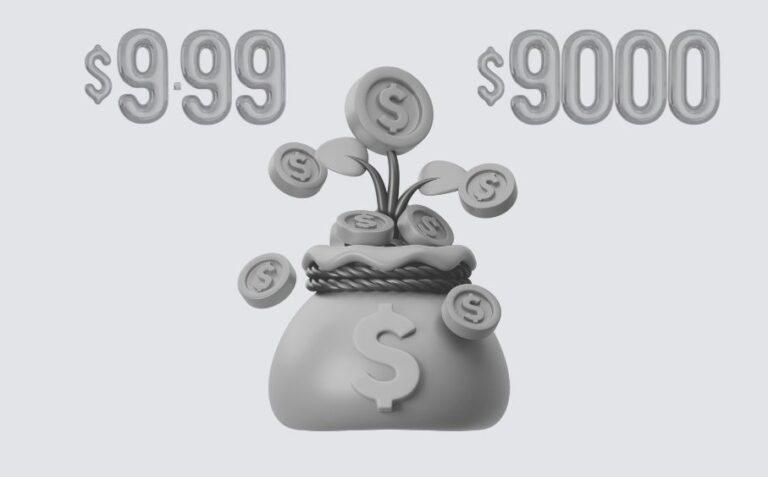Do you remember the last time you saw a price tag of $9.99? We assume that it can’t be that long. Because we all see these types of odd price tags in our everyday lives, since in retail, this decimal has a purpose. It signals affordability. In contrast, there is another type of price tag that brands use specifically on luxury products to convey exclusivity. There isn’t a chance that you will see a Hermes bag with a decimal price tag; it would have an even price like $9.900. So, odd-even pricing is a psychological pricing strategy that allows merchants to shape how customers perceive their products or services. Let’s look at their definitions and the benefits of each strategy.
What is Odd Pricing?
Odd pricing, as the name suggests, is ending a product’s price with a decimal, like 0.95, 0.97, or 0.99. Just as with charm pricing, our brains are wired to ignore the last digits, so we assume the price is lower. That’s how this price tag conveys to the customer that the products are affordable. Also, the number seems to have been calculated based on cost, so customers think they are receiving better value for their money. The goal of odd pricing is to increase sales and generate more profits.
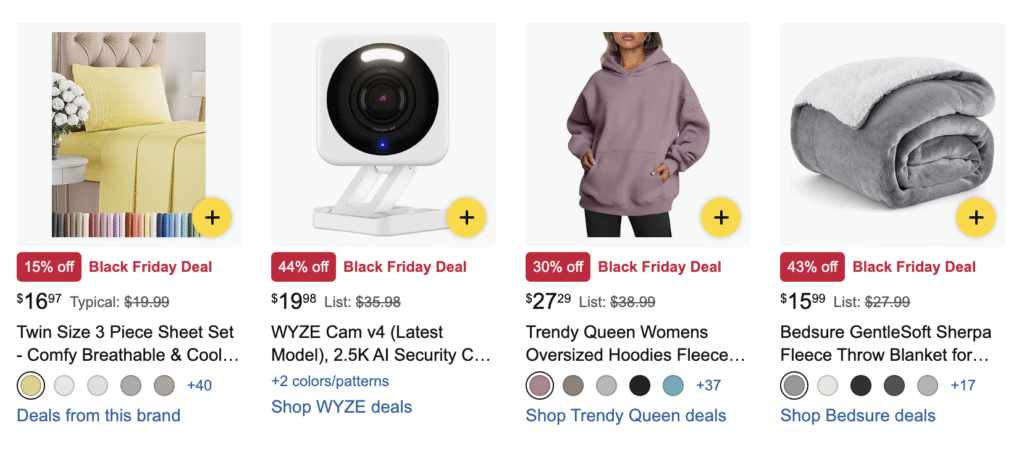
Which Sectors Use Odd Pricing Primarily?
Odd pricing is common in ecommerce, restaurants, retail, and consumer goods. To exemplify each, you can imagine a pack of soda that you see in supermarkets, fast food chains that heavily promote several items, and ecommerce stores like Amazon, where merchants compete to sell their items at the best price.
What is Even Pricing?
Even pricing refers to pricing products without a decimal, like .00 or 0.50. The goal here is to set a price that signifies nothing about being promotional, so that it feels intentional. Confidently pricing a product at $ 5,000 level confirms a sense of superiority. These prices are the mirror of how people view your company rather than the actual cost of the products. Even pricing is standard among luxury products as part of a premium/prestige pricing strategy.
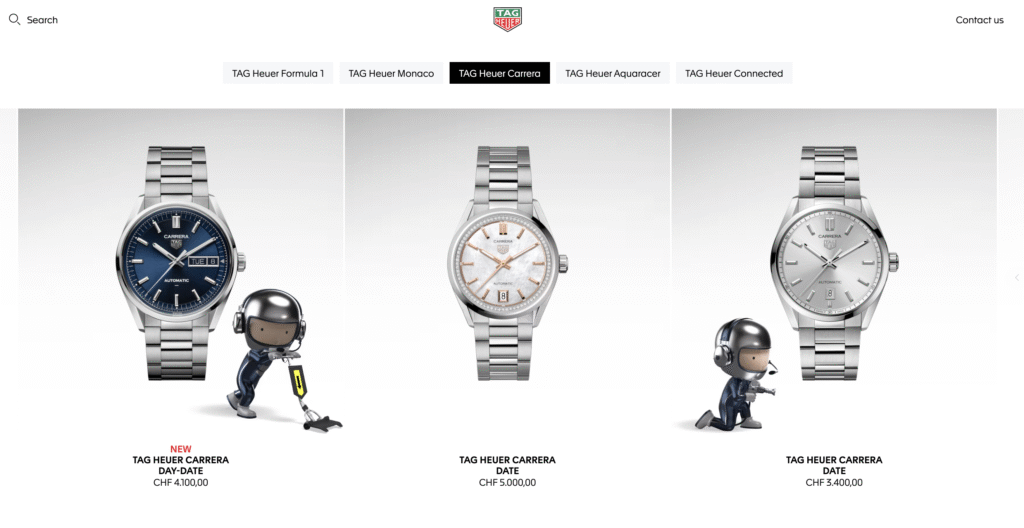
Which Sectors Use Even Pricing Primarily?
Even pricing is common for high-end fashion pieces like haute couture dresses, watches, high-end cars, jewelry, where anything that can be customized for the customer is priced at a certain rate, fine-dining restaurants, and designer clothes.
Why Customers Perceive Price As They Do?
Retailers think lowering prices by a few cents can actually help them increase their sales volume, and it appears to be right. Well, there is an explanation of why consumers receive the odd pricing as cheaper than the even prices, and that is called left-digit bias. According to research on the left-digit bias by the American Marketing Association:
Consumers’ price evaluations are influenced by the left-digit bias, wherein consumers judge the difference between $4.00 and $2.99 to be larger than that between $4.01 and $3.00, even though the numeric differences are identical.
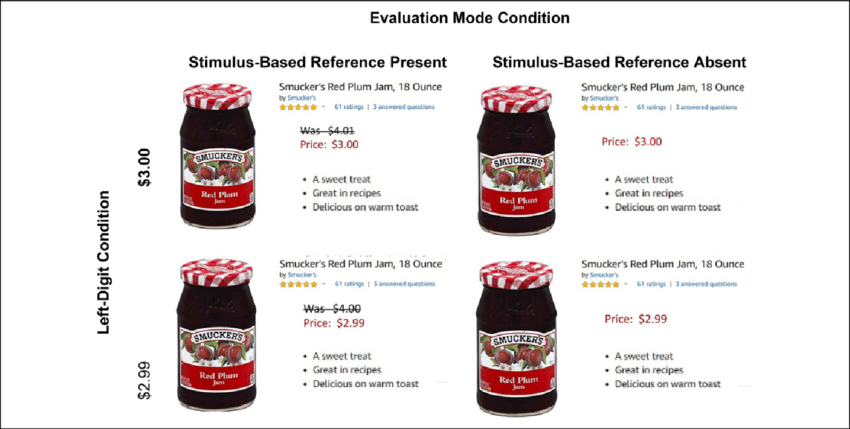
The study shows that 5 out of 6 experimental cases report that the left digit is a more powerful stimulus to the brain, and that customers perceive them digit by digit rather than rounding numbers. As shown in the image above, in all the possible scenarios, the bottom left option seems the most appealing. Even though the price is the same as the bottom right option, combining other psychological pricing tactics also helps in this case. Anchor pricing is also a cognitive bias, as customers make their pricing judgments based on initial price information, and $4 serves as an anchor in this case, making the bottom left option more purchaseable. That is the reason why customers tend to fall for psychological pricing methods, and merchants need to make sure they have acknowledged and leveraged them.
How To Use Odd-Even Pricing Effectively?
Odd pricing is one of the simplest methods that works instantly. According to your brand positioning, if you operate in a competitive retail industry, you might already be using odd pricing without even knowing the reason behind it. To shuffle things a little, you can combine other pricing tactics with odd pricing. You can even show the initial products’ prices as even prices to discount them to odd prices, or you can choose an odd number for your odd pricing, such as $11.77 instead of $11.99, to capture more attention.
On the other hand, if you want to operate in less competitive areas and your products are top-tier and more niche, then you need to implement even pricing as a first step. After all, you don’t want to set your prices out of cost-cutting or competitiveness; you want customers to see these rounded numbers as an intentional statement of your brand quality. The more you feel confident in your products’ value and your brand image, the more you can charge customers, and they will also be more willing to pay a premium price.
Conclusion
Odd-even pricing is all about how businesses strategically position themselves in the market. If we were to divide them into two polar groups, odd pricing is a way to go for signaling affordability, and precisely calculated prices for customers who aim to receive good value for their money. While even pricing, on the other hand, is excellent for signaling a top tier brand image and quality to customers who aim to receive exclusivity and prestige for their money.

